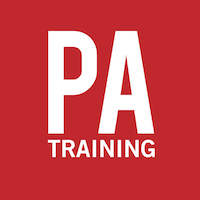
Course Overview
This two-day course offers an intensive introduction to PR in all its forms. The introduction to PR course looks at the principles and practice of public relations in the modern media environment using a mixture of presentation, seminars and practicals.Who the course is for
Anyone who wants to get up to speed quickly on the fundamentals of public relations. Suitable for those involved in PR full time or for other executives who want a better understanding of how PR works.Learning Objectives
- What is PR? Definitions and examples how PR works and why it sometimes fails
- Tools and channels – different ways of delivering effective public relations
- PR planning, how to develop a campaign
- How to measure the value of your PR
- Putting people at the heart of your campaign
- Press releases, the good, bad and the ugly
- Media relations in action
- How to deal with the press and what makes news?
- Tips on interviews and crisis management
- The differences between in-house and agency; how to run a great press office
Course Outline
What is PR? Definitions and examples of how PR works and why it sometimes fails- How we define PR and why it’s important to understand the principles
- Different types of PR: from event management and public affairs to experiential and social
- Differences between PR, marketing and advertising
- Deciding if PR is the right choice for your business or organisation
- Why traditional media relations still works
Tools and channels – different ways of delivering effective public relations
- What tools are available?
- What are the pros and cons of each PR tool?
- Why social is now an essential part of PR
- Best practice in deploying different tools & techiques
- Identifying the audience and finding routes to reach them
PR planning, how to develop a campaign
- Three-sage strategic planning & four-stage PR planning
- The challenge of analysis and research
- How research and analysis relates to evaluation
- The PR planning process and how it should feed back into the business/organisation
How to measure the value of your PR
- Why evaluation is the Achilles heel of the PR industry
- Quantitative and qualitative research
- Different types of evaluation, ACE, AVE, media and audience analysis
- Advanced evaluation – tone, message, sentiment and impact
- Measuring social media campaigns
Putting people at the heart of your campaign
- Building your campaign around people
- Why people are important in building engaging narratives
- Campaigns that have worked, and campaigns that haven’t
- Understanding the role of the press release in media relations
- Assessing value and impact of a press release
- Why some press releases work and some don’t
Media relations in action
- Understanding media and what journalists are looking for
- Using national media for PR – the how and why
- Tricks of the trade, surveys, expertise, thought-leadership
- Taking ownership of bad news
How to deal with the press and what makes news?
- What journalists are looking for from PR practitioners
- Understanding target media and their audience
- How to build media lists and target journalists
Tips on interviews and crisis management
- Do’s and don’ts of press interviews
- What journalists want from PRs
- How to deal with bad news
- The basics of crisis management
The challenges of in-house and agency; how to run a great press office
- The ‘Total Press Office’, what it is and how it works
- The need to manage expectations
- Why feedback is crucial to success
- Building relationships with clients and colleagues
Our partners, Press Association Training will be delivering this course on behalf on Journalism.co.uk.
Getting there
This course will be held at Press Association 292 Vauxhall Bridge Road London SW1V 1AEAbout Press Association
The Press Association (PA) is the national news agency for the UK and Ireland and a leading multimedia content provider across web, mobile, broadcast and print. For the last 147 years PA has been providing fast, accurate feeds of text, data, photos and video. Today the business is increasingly focused on the delivery of complete products for both digital and print clients.
The Press Association Training courses are specifically tailored to ensure they include the very latest developments in the rapidly changing world of the media.
All of PA's trainers are working journalists or PR professionals with the most up-to-date knowledge who always shape courses to the individual needs of those attending.









